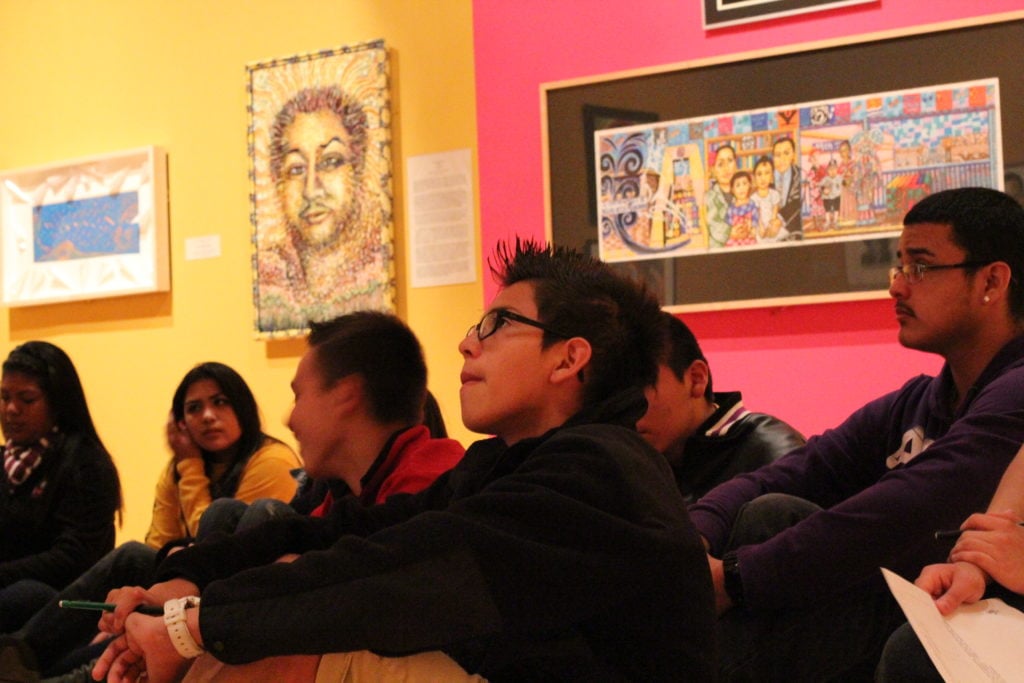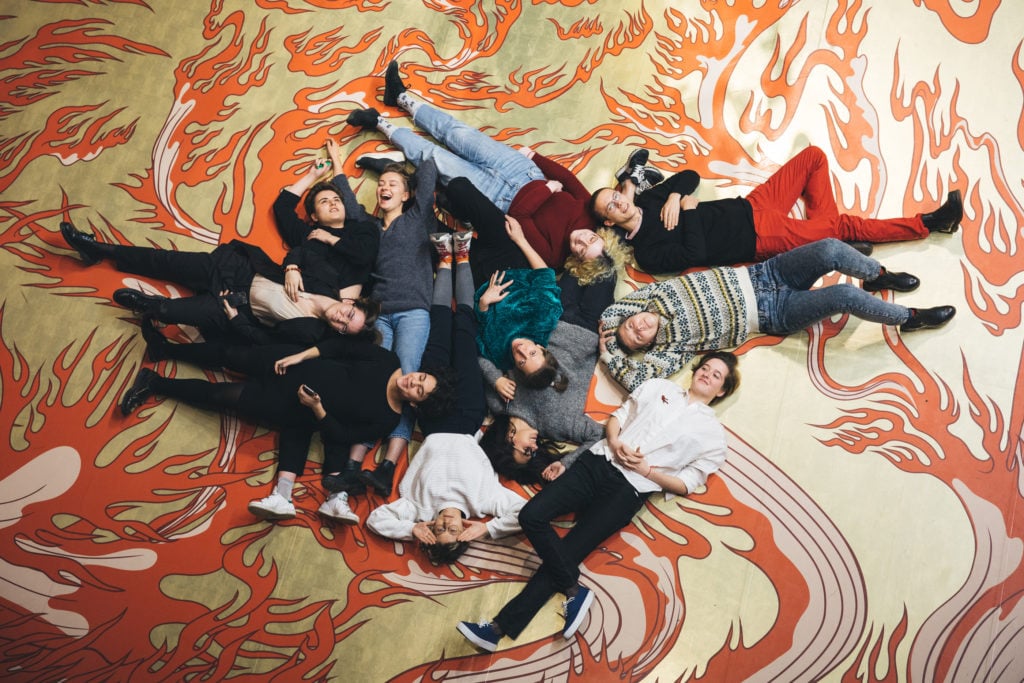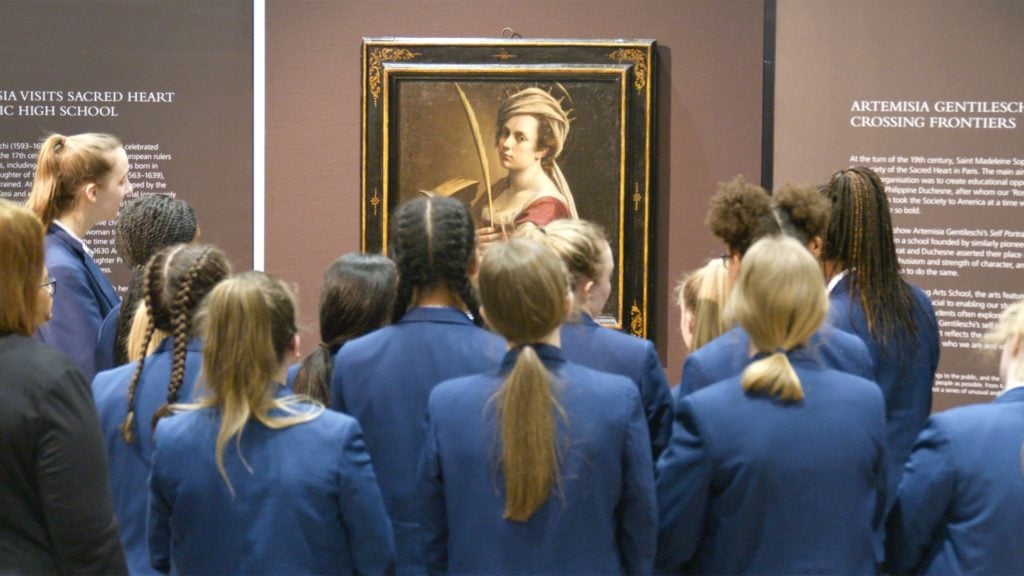Every Monday morning, artnet News brings you The Gray Market. The column decodes important stories from the previous week—and offers unparalleled insight into the inner workings of the art industry in the process.
This week, looking toward the future—and asking how much of a luxury that is…
GENERATION GAP
On Monday, Melanie Gerlis penned an op-ed in The Art Newspaper encouraging the art market to set its sights beyond millennials to Generation Z. And considering her argument raises uncomfortable questions about much more than just selling art.
There is both a quantitative and a qualitative side to Gerlis’s case. For the data-centric in the crowd, she relays estimates from Bloomberg that Gen Z (defined as people roughly between the ages of seven and 22 years old) already makes up 32 percent of the world’s population and 40 percent of consumers. Both of those figures outnumber millennials (defined as people roughly between the ages of 22 and 37 years old), the youth demographic many dealers feel simultaneously compelled and powerless to chase. What’s more, Gen Z also represents an “indirect potential spend” of $3 billion by virtue of the sway they currently hold over their parents’ wallets.
On the qualitative side (though market research backs it up), Gerlis characterizes members of Gen Z as much tougher customers than the millennials already making up a healthy portion of the global workforce. She defines them as more skeptical of “brands, labels, and anything associated with big business,” more interested in socially conscious alternatives, and far less trustworthy of social-media content and the targeted marketing now woven into its DNA.
Taken together, Gerlis contends, all of the above could present a shining opportunity to art-market animals other than the apex predators who have been dominating the jungle for the past 15 to 20 years—if, that is, modestly sized galleries, smaller auction houses, and even less orthodox sellers are ready to pounce on Gen Z soon.
On principle, I really, really want to agree with Gerlis’s take. Art dealers in general desperately need to commit themselves to cultivating new buyers, and I think it makes less and less sense for sub-elite dealers to try to compete for the same collectors as the big guns. But what I want to do is propose a theory for why the vast majority of the art market isn’t ready to pursue Gen Z—and why that choice is both defensible on a micro level and regrettable on a macro one.

School and youth programs at the National Museum of Mexican Art. Courtesy the Ford Foundation.
INDIRECT HITS
In considering whether or not to pitch Gen Z today, the art market has to distinguish between present value and future value. Bloomberg’s data offers an obvious starting point for this analysis in the form of the $3 billion of influence that seven-to-22-year-olds supposedly have over their parents’ spending right now.
While I don’t doubt the figure, I’m a little skeptical about how much it applies to the specific category of art sales. Contrary to my initial thought, the issue isn’t price. Retail research firm Digitas, for example, recently found that “60 percent of all tweens today have substantially influenced their parents’ final decision on which car to buy.”
Instead, ciphering through this prospect begs two questions. First, how much do Gen Z kids care about what hangs on their parents’ walls? Second, how much do parents care about their Gen Z kids’ opinions about what hangs on their walls?
With the possible exception of children from wealthy families already collecting art, I suspect the answer to both questions is “not very much.” (Full disclosure: I am neither wealthy nor a parent.) Not all indirect potential spending is created equal. The research I’ve been able to find all implies that seven-to-22-year-olds are the most invested in, and effective in swaying, their parents’ choices in sales categories that have a clearer functional effect on their lives than artwork, such as food, entertainment, hotels, and airlines. To go back to the example above, Digitas executives Jodi and John Robinson wrote in a summary of their research that “a big part of the reason we chose our new car was because the kids really liked the refrigerated center console, so that they could store their drinks and yogurt packs.” This is not the kind of consideration seven-to-22-year-olds are likely to confront when it comes to their parents’ choice of art.
More importantly, given what we know about global wealth disparity—the Washington Post, for instance, recently published a story titled “Income Inequality Is Rising So Fast Our Data Can’t Keep Up”—how many parents are even in a position to buy artwork from a smaller gallery or auction house, no matter how effectively those smaller sellers might be able to infiltrate the taste profile of seven-to-22-year-olds? Most of that $3 billion in potential spending is siloed with only a small handful of high-earners. And if you’re not already selling to those households, is the best strategy for changing that to spend time, money, and resources convincing the children to unlock the back door?

The youth team of the Garage Museum. Photo by Sasha Serbina, courtesy Garage Museum of Contemporary Art.
DÉJÀ VU ALL OVER AGAIN
My suspicion is that Gen Z’s purchasing clout doesn’t matter much to the art market until it transitions from being indirect spending into direct spending. And the reality is that most galleries today don’t have the luxury of planning for customers 10 or 20 years ahead. They’re too focused on paying their next month’s rent, or getting through the next art fair, or actually receiving payment on their latest outstanding invoice.
I have more than my anecdotal sense to go off here. Remember, almost all galleries are small businesses, and the statistics on small businesses aren’t exactly gleaming monuments to longevity. According to the US Small Business Administration, about 20 percent of their constituency folds in year one, about half shutter within five years, and about two-thirds close before their 10th anniversary.
In this sense, expecting rank-and-file galleries to game plan for the next generation is a little like expecting a group of plane-crash survivors to adhere to the recommendations of the USDA food pyramid while they’re trying to forage and scrap their way back to civilization. The long term is a high-class problem when the here and now is do or die.
Ironically, then, I think the galleries and auction houses best positioned to look ahead to Gen Z are actually the biggest. They are the only ones with the structure and financial security in the present to dedicate time and personnel to customers in the semi-distant future. Save for the select few smaller players with a perpetual monetary lifeline—family wealth, usually—everyone else has to commit to connecting with the segment of the population who can buy art today.

Jack Pierson, A Youth of Rare Beauty (2014). Photo: Courtesy Thaddaeus Ropac Gallery.
Granted, that doesn’t solve the potential problem of Gen Z’s aversion to big brands. But let’s consider that the rebellious streak might be less a feature of this particular generation of youth than a feature of youth across generations, at least in the postwar West. Read about the ways that pundits at the time described the rise of Gen X (they hated everything corporate!) or the Baby Boomers (they created the counterculture!), and it’s impossible to avoid encountering much of the same sentiment now being repurposed around Gen Z.
Aging does funny things to most of us, especially if we make even a modest amount of money in the process. Most of the music that signaled I had edgy taste in college is now being played in fast-casual restaurants and coffee shops. Disaffected teens who moshed to the Pixies in the ‘80s are now driving minivans and running hedge funds. The generation that forged Woodstock later gave us neoliberalism.
My hunch is that the most prosperous members of Gen Z will follow a similar trajectory. And as long as the art market continues to rely on selling scarce works that cost thousands of dollars each (at least), the most prosperous members of Gen Z are the only ones who really matter.
Selling to the others, who are on track to enter an economy in which buying power has been frozen for 40 years, would require an existential re-evaluation of what being a gallery or auction house means. Are many current dealers prepared to do that? Or, to paraphrase the economist John Maynard Keynes, would they still rather fail conventionally than succeed unconventionally? I know what I think, but my answer isn’t the one that matters.
[The Art Newspaper]
That’s all for this week. ‘Til next time, remember: The more things change, the more they stay the same.









